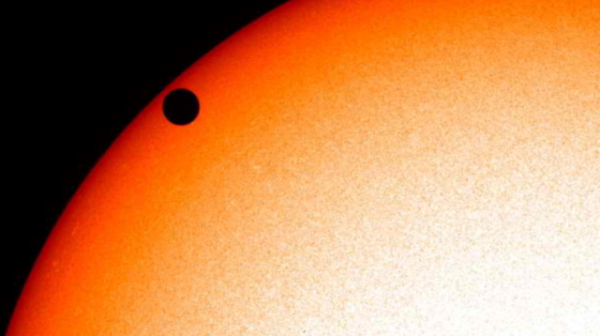GJ 1132b: Newly Discovered Earth-Like Exoplanet is Venus Twin
| Daphne Planca | | Nov 13, 2015 11:27 AM EST |
(Photo : Getty Images) Scientists have found an earth-like planet being described as Venus twin. It has been named GJ 1132b.
Scientists searching for an Earth-like exoplanet have unexpectedly stumbled on a potential Venus twin called GJ 1132b.
The GJ 1132b planet is orbiting a small star Gliese 1132 (known as red dwarf) located a mere 39 light years from Earth. It is the closest Earth-sized exoplanet discovered. Its rocky surface measures about 440 degrees Fahrenheit and it has a permanent day and night side; meaning it is tidally locked and presents the same face to its star. The newly discovered plant is composed of rocks and metals just like the Earth.
Like Us on Facebook
Its surface cannot retain liquid water because of its scorching temperatures, making it uninhabitable for life. But it can be cooled enough to host a substantial atmosphere, according to the scientists. The GJ 1132b is 16 percent larger than Earth and has a mass 60 percent greater than Earth with a diameter of about 9,200 miles.
Zachory Berta-Thompson from the Massachusetts Institute of Technology's Kavli Institute for Astrophysics and Space Research said that this planet will be a favorite target of astronomers for years to come. It is the most important planet ever found outside the solar system, astrophysicist Drake Deming at University of Maryland said.
The MEarth-South Observatory was used to discover the planet with Berta-Thompson and an international team of scientists from Brazil, Portugal, and France. This facility has a Harvard University-led array of eight 40-centimeter-wide robotic telescopes and is located in the mountains of Chile. Small, nearby stars called M dwarfs are monitored through through these telescopes.
On May 10, a robotic telescope was able to capture a faint dip from GJ 1132 and immediately observed it at much faster 45-second intervals. Along with other telescopes in Chile, it confirmed that brightness of GJ 1132 dimmed by 0.3 percent every 1.6 days which signals that a planet is regularly passing in front of the star.
The James Webb Space Telescope, which is the much larger successor to the Hubble Space Telescope, is set to be launched in October 2018. Berta-Thompson hopes that it will be used to identify the planet's atmosphere including the color and chemical makeup and the pattern of its winds.
TagsGJ 1132b, planet discovered, exoplanet, planet discovered looks like earth, planet discovered similar to earth
©2015 Chinatopix All rights reserved. Do not reproduce without permission
EDITOR'S PICKS
-

Did the Trump administration just announce plans for a trade war with ‘hostile’ China and Russia?
-

US Senate passes Taiwan travel bill slammed by China
-

As Yan Sihong’s family grieves, here are other Chinese students who went missing abroad. Some have never been found
-

Beijing blasts Western critics who ‘smear China’ with the term sharp power
-

China Envoy Seeks to Defuse Tensions With U.S. as a Trade War Brews
-

Singapore's Deputy PM Provides Bitcoin Vote of Confidence Amid China's Blanket Bans
-

China warns investors over risks in overseas virtual currency trading
-

Chinese government most trustworthy: survey
-

Kashima Antlers On Course For Back-To-Back Titles
MOST POPULAR
LATEST NEWS
Zhou Yongkang: China's Former Security Chief Sentenced to Life in Prison

China's former Chief of the Ministry of Public Security, Zhou Yongkang, has been given a life sentence after he was found guilty of abusing his office, bribery and deliberately ... Full Article
TRENDING STORY

China Pork Prices Expected to Stabilize As The Supplies Recover

Elephone P9000 Smartphone is now on Sale on Amazon India

There's a Big Chance Cliffhangers Won't Still Be Resolved When Grey's Anatomy Season 13 Returns

Supreme Court Ruled on Samsung vs Apple Dispute for Patent Infringement

Microsoft Surface Pro 5 Rumors and Release Date: What is the Latest?










